You can contact LEARNZ, part of CORE Education, at:
Postal Address:
PO Box 13 678,
Christchurch 8141,
New Zealand
<- Homepage: Bioblitz: What's in your backyard?
Kia ora koutou,
It was a relief to wake to fine weather in Mt Somers this morning, especially after the gale force winds that raged yesterday. You met with experts from the Geraldine Department of Conservation office who wanted to show you how to complete a BioBlitz. They also answered questions during our first field trip web conference. It was fantastic to see so many schools tuning into the conference and I’m sure everyone learned a lot about our unique wildlife. You can listen to a recording of this web conference to find out more.
Bird watching
After a short drive up the valley you began your BioBlitz at Lake Roundabout in Ō Tū Wharekai. This protected wetland area is the perfect place to find a variety of plants and animals. Ian showed you some methods for observing birds. He used a scope to see birds on the far side of the lake and even managed to spot a kōtuku or white heron. These birds are not common in New Zealand and are often hard to see. Ian explained that observing birds takes patience. Often people don’t see birds because they don’t stay still or quiet long enough to notice. Ian found a surprising number of birds. A lot of these were introduced birds including swans, mallards, welcome swallows and finches. You were able to identify some birds by the call they made and spotted a tiny grey warbler after hearing its warble. Ian showed you how to use a bird guide to help identify birds and how to identify different habitats in which birds can live. You can watch the video to find out more about bird monitoring.
Tracking animals
You headed to the Ashburton River to see if you could find some land animals with Damien. Unfortunately, many of the land animals in this area are introduced predators and are most active at night. To find out what animals live in an area you can set up tracking tunnels. These tunnels have bait inside to attract animals. They also have a card with ink on it which captures the footprints left by animals that enter the tunnel. These footprints are an easy way to identify animals. Damien also uses trail cameras to take photos or video. These cameras are triggered by movement and use infra-red technology to capture images at night. You can see this equipment in the video. Damien said that these cameras have really helped to identify predators and monitor nesting sites. Damien placed bait close to the cameras. He has found that the cameras attract more animals than the tracking tunnels. You helped set up some tunnels and cameras so tomorrow you will check them to see what animals live here.
Finding invertebrates
Many of the creatures living in Ō Tū Wharekai are small and hard to spot. Brad is a biodiversity ranger. He believes that invertebrates are some of the most important and interesting creatures in this ecosystem. These animals have no backbone and are an important source of food for many other larger animals. He showed you four different methods for finding invertebrates. One method involved running around with a net to sweep up insects flying above the ground. Another way to catch invertebrates is to set up a pitfall trap. These traps are containers set into the ground which catch bugs. You need to remember to put a lid on the trap and check it daily so you can record and then release any captured critters. You can see how to set up these traps in the video.
Aquatic invertebrates
Brad also showed you how to find aquatic invertebrates. You looked in a small stream close to the Ashburton River. This stream ran clear while the larger rivers in the area were still flooded and dirty after all the recent rain. Brad lifted up rocks to find larvae. He also used a kick net to collect invertebrates. You found a toe biter or Dobsonfly. These curious creatures spend most of their life as larvae and are one of our largest freshwater invertebrates. It was interesting to see its gills along the outside of its body. You were careful to avoid its strong jaws which are capable of delivering a decent bite.
Plant surveys
You had to leave the road and head along a rough four-wheel-drive track to get to your final stop for the day alongside Lake Clearwater. Nancy showed you some of the unusual plants growing in the area. She used a quadrat to sample different areas. These squares are a great way to focus your attention on plants that may otherwise go unnoticed. You found tiny berries, flowering gentians, daisies and tussocks amongst smaller herbs and grasses. It was surprising just how many different plants were growing in such a small area. You can see this in the video. Nancy showed you how to take photos of plants to add to iNaturalist and what to look for to help identify species. All the species that we find on this field trip will be added and shared on iNaturalist. You have already seen a huge variety of plants and animals today so I can’t wait to see how many different species we find over the three days.
Tomorrow you will return to Ō Tū Wharekai to see what animals have been through the tracking tunnels and fallen into the pitfall traps.
See you then,
Shelley the LEARNZ field trip teacher.
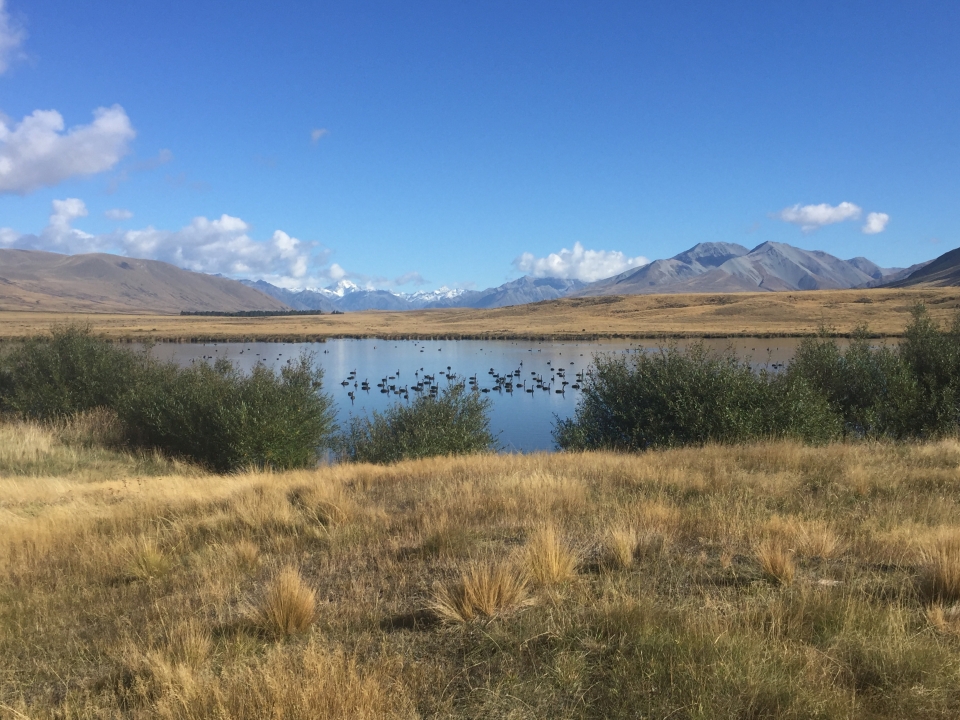
You started your BioBlitz at Lake Roundabout in Ō Tū Wharekai. What birds can you identify in this photo? Image: Shelley Hersey, LEARNZ.
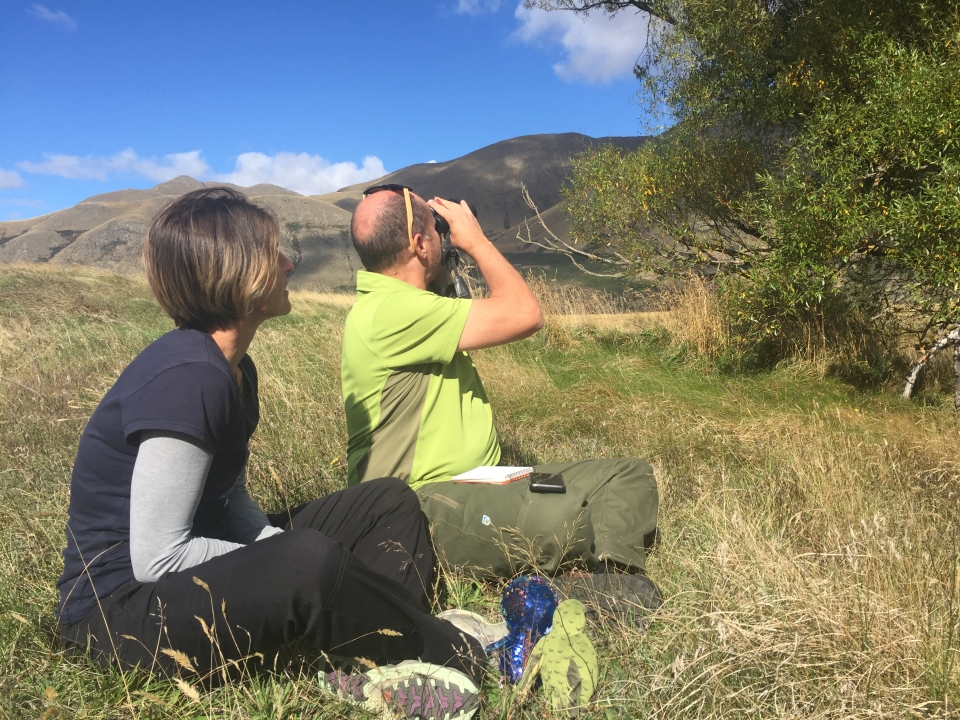
Ian shows Shelley and the ambassadors how to find and record birds by sitting quietly, using binoculars and listening for bird calls. A notebook was used to record different species. What birds do you think they saw? Image: Shelley Hersey, LEARNZ.
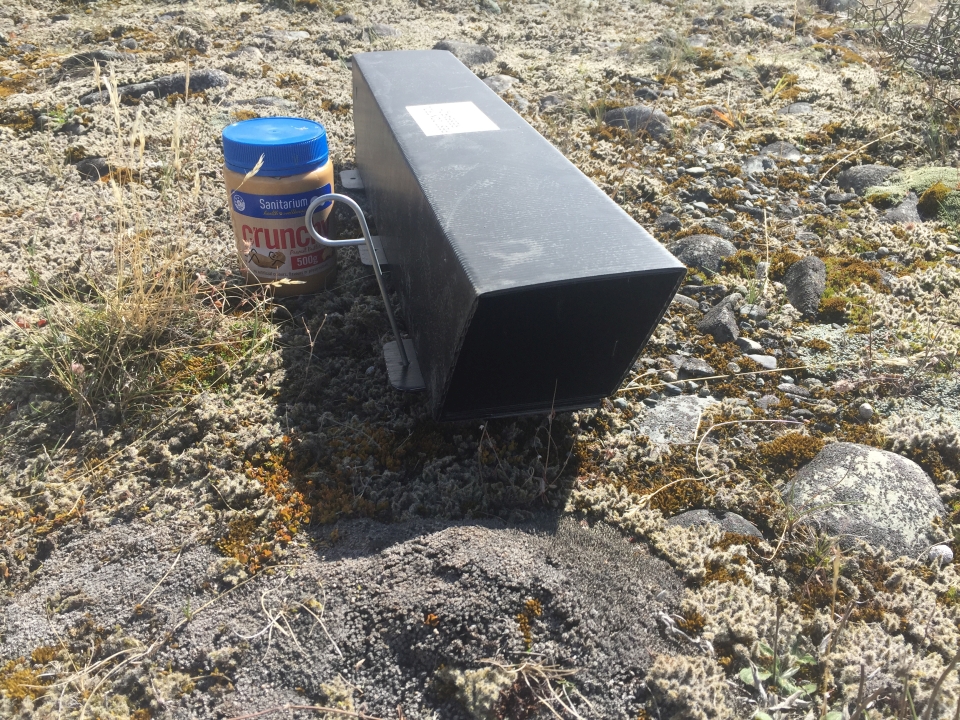
This tracking tunnel has been set up with peanut butter as bait. A card with ink on it will record animal footprints. What animals do you think we will find? Image: Shelley Hersey, LEARNZ.
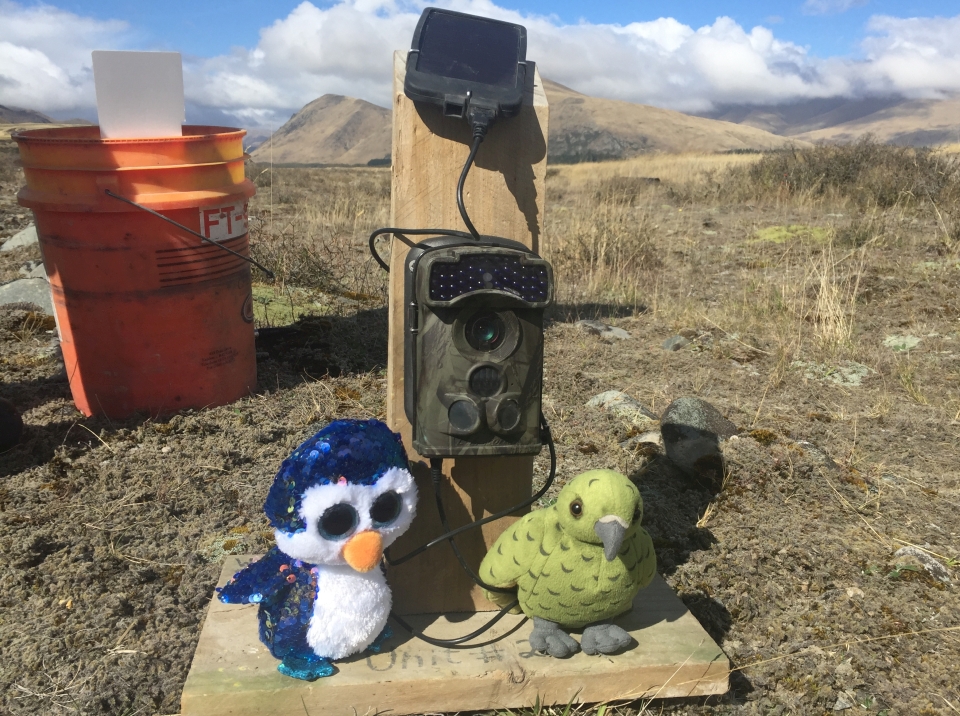
Pengu and Māia check out the trail camera that can be set up to monitor predators. How does this camera work? Image: Shelley Hersey, LEARNZ.
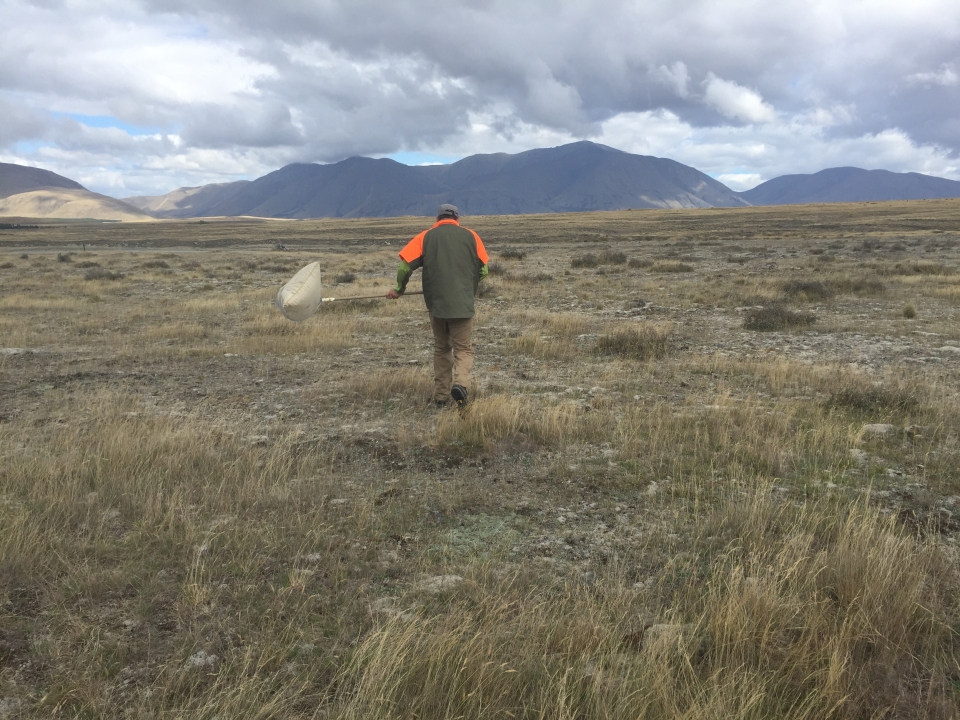
Brad uses a sweep net to catch insects flying above the tussock. Image: Shelley Hersey, LEARNZ.
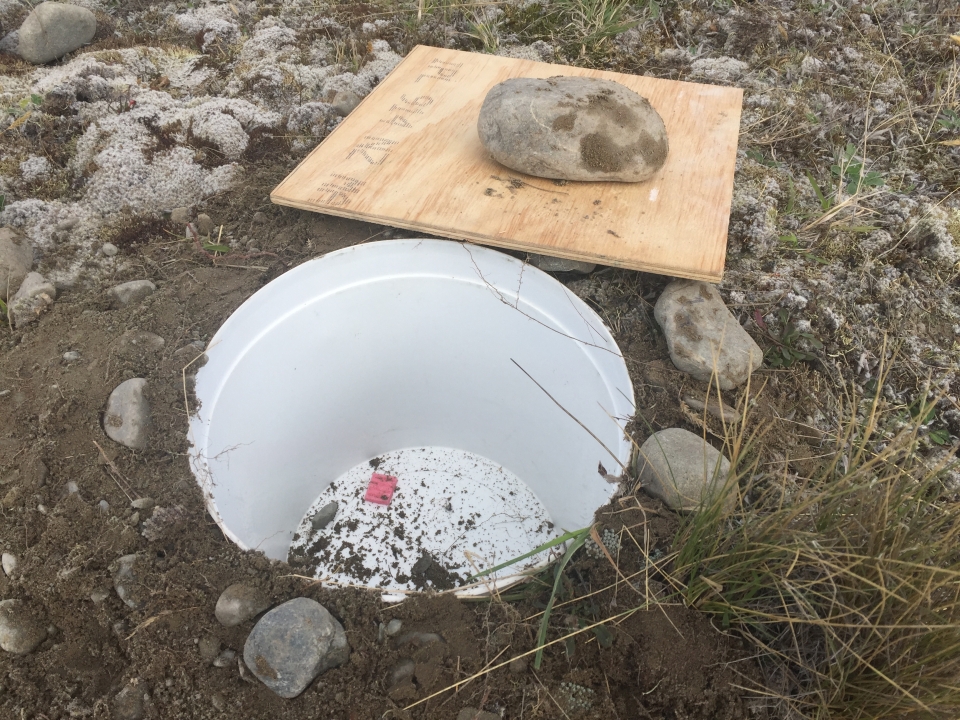
This is a pitfall trap ready to have the lid placed on top and trap any animals that accidentally fall in. Why do you think pieces of wet sponge have been placed in the trap? Image: Shelley Hersey, LEARNZ.
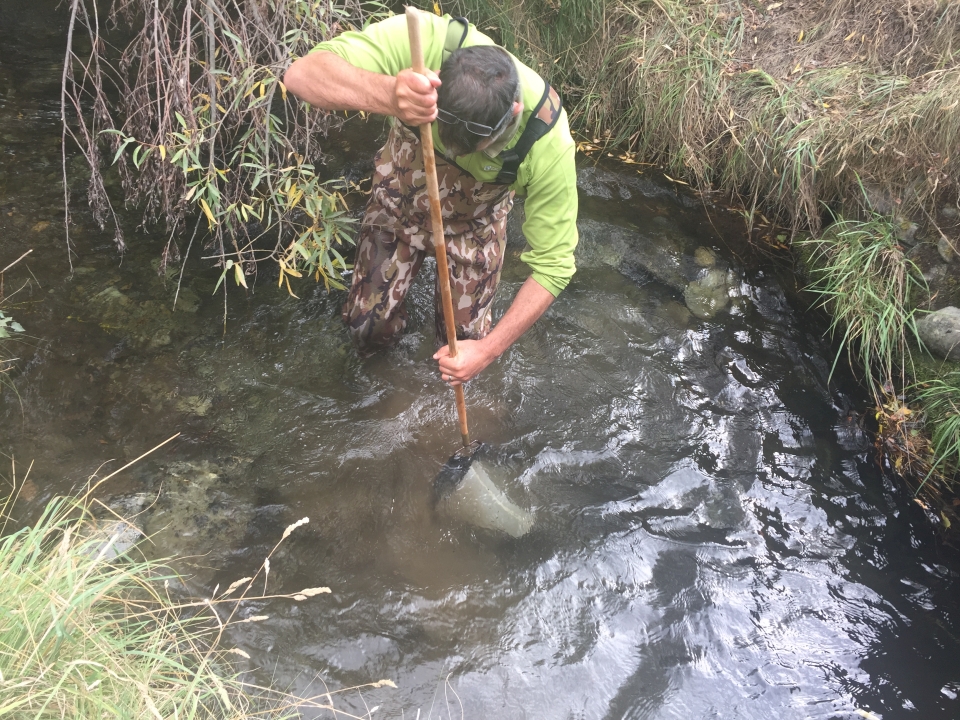
Brad uses a kick net to catch aquatic invertebrates. What invertebrates do you think he will find? Image: Shelley Hersey, LEARNZ.
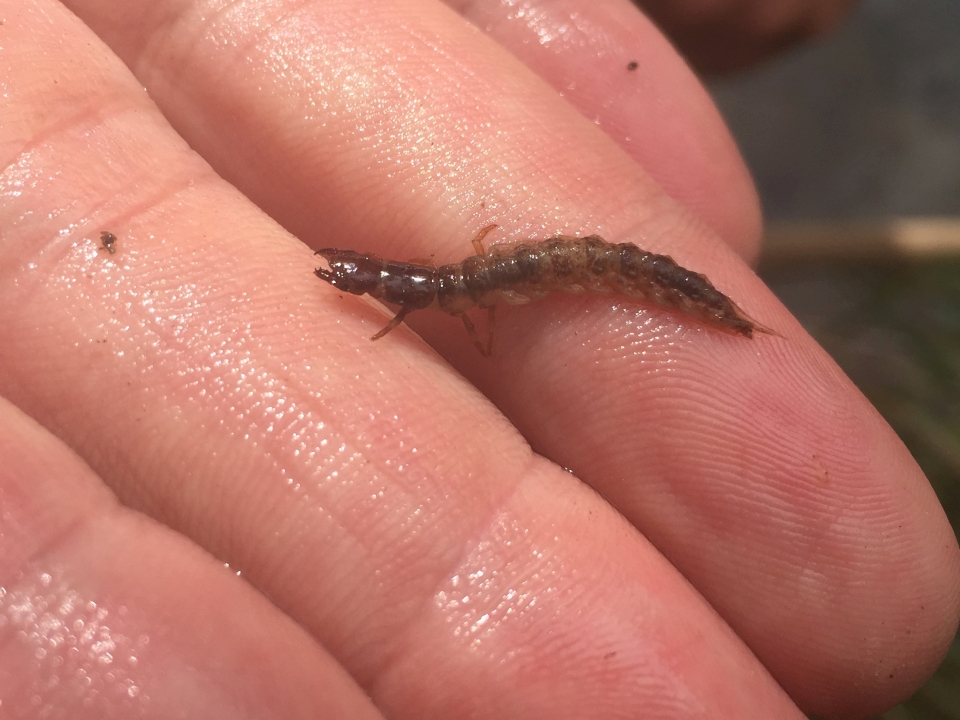
Brad finds a dobsonfly or toe biter. You can see the external gills that run along each side of its body. Image: Shelley Hersey, LEARNZ.
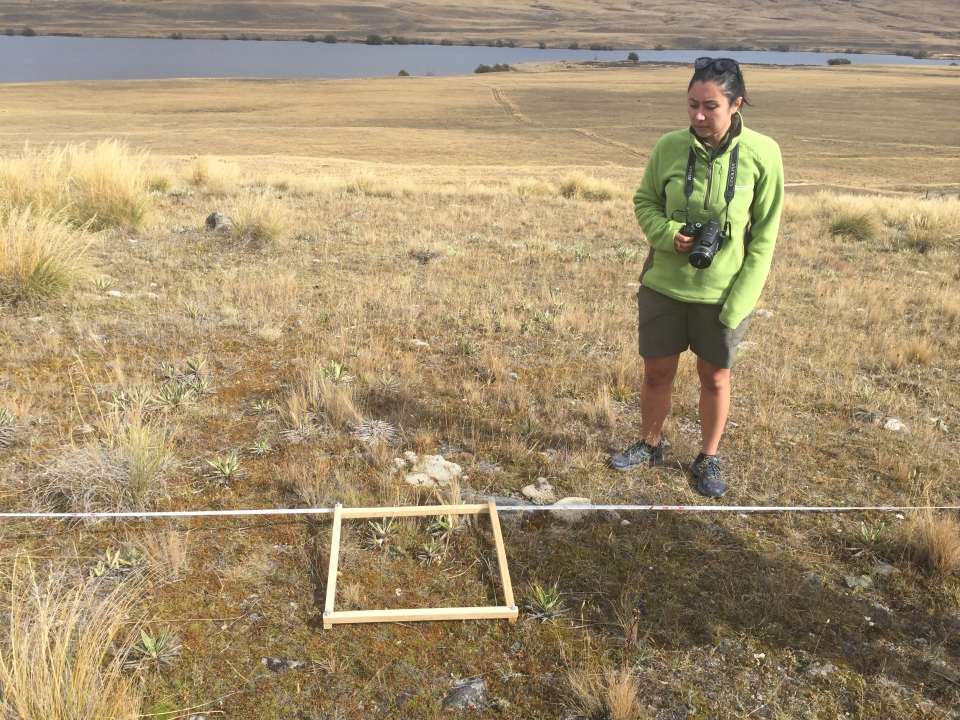
Nancy shows you how to sample plants by using a transect line and quadrat. Why do you think it is helpful to use this equipment? Image: Shelley Hersey, LEARNZ.
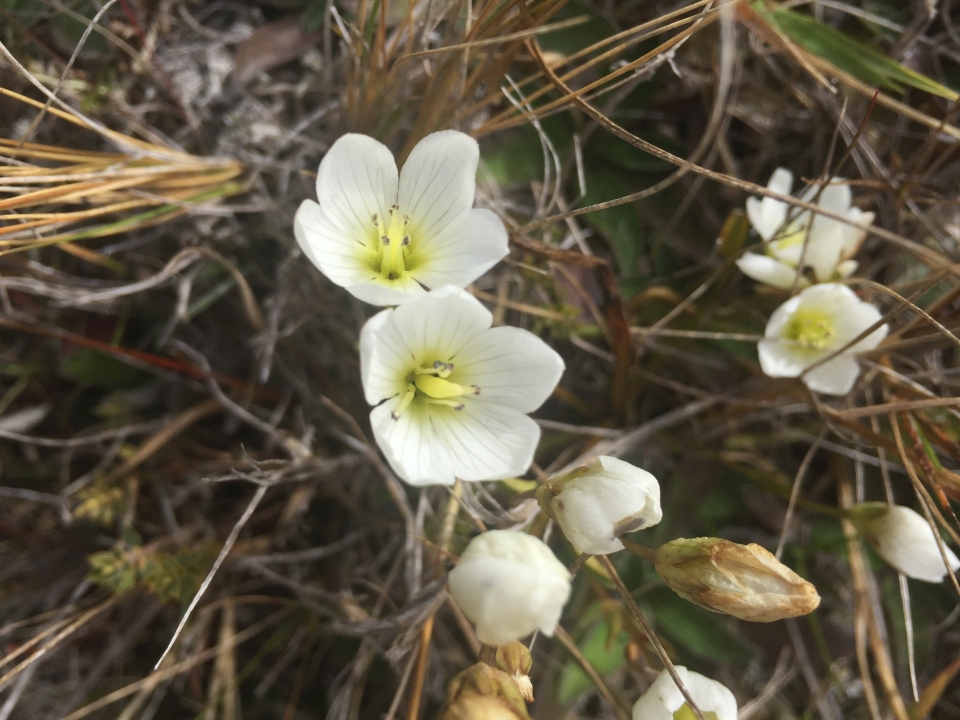
You found some gentians that were still flowering. Why do you think many of the flowers in alpine areas are white? Image: Shelley Hersey, LEARNZ.